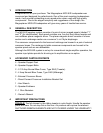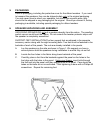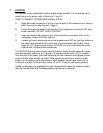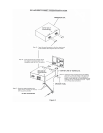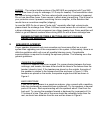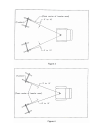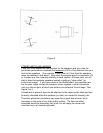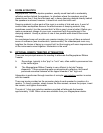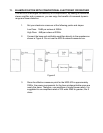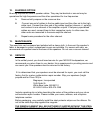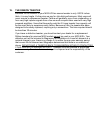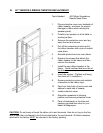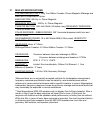
FUSING – The mid and treble sections of the MG3.6/R are protected with Type SAG
normal blow fuses (4 amp for midrange; 2-1/2 amp for tweeter). The bass section does
not require fusing protection. The fuse values should never be increased or bypassed.
Do not use slow-blow fuses. Fuses remain in effect when bi-amplifying. This is done for
your protection since it prevents overdriving from an amplifier, or the distortion that
results from an overdriven amplifier (clipping).
In case the MG3.6's do not sound "quite right," especially after high volume levels,
please check the midrange fuse. When it is blown some owners do not realize it, since
a blown midrange fuse is not as apparent as a blown tweeter fuse. Some amplifiers will
distort or go into thermal overload when driving MG3.6's with a blown midrange fuse.
BURNED OUT MID OR TREBLE SECTIONS ARE NOT COVERED
UNDER THE WARRANTY.
8. SPEAKER PLACEMENT
Proper speaker placement and room acoustics can have more effect on a music
system than upgrading one of the components in the system. Unfortunately, there is no
definitive guideline which will cover all possible listening rooms. Considerable
experimentation is required for locating the optimum position. The following are a few
general guidelines:
TWEETER PLACEMENT
The MG3.6 tweeters are mirror-imaged. For proper phasing between the bass,
midrange, and tweeter, the bass driver should be closer to the listener than the
tweeter (ahead in time). If the tweeters are placed on the outside, the angle of
the speaker in relation to the listener should be as shown in Figure 3. If the
tweeters are placed on the inside, the speaker angle should be as shown in
Figure 4.
BASS RESPONSE
If you do not have access to a spectrum analyzer, play a record with a repetitive
bass line (preferably an acoustical bass instrument). Try the speakers in several
parts of the room. Start experimenting with the speakers about 3 feet from the
back wall. Try moving the speakers forward or backward by increments of 6 to
12 inches at a time. One part of the room should be noticeably better than the
rest, as should one distance from the rear wall as shown in Figure 5.




